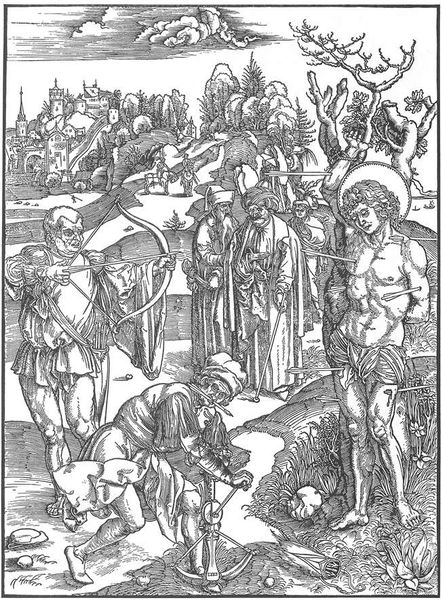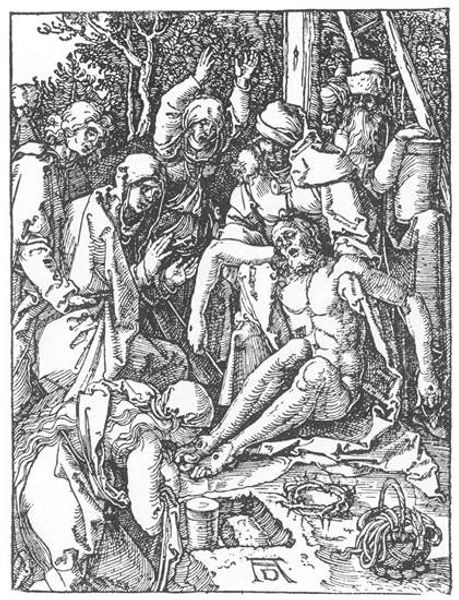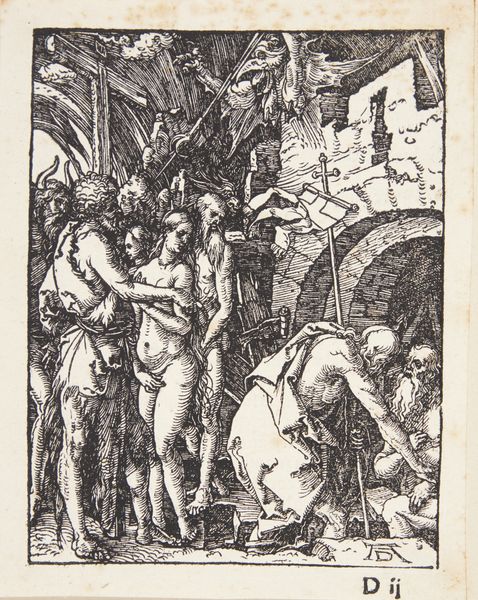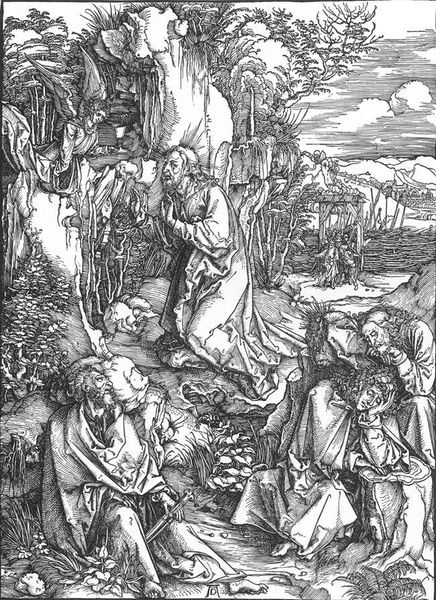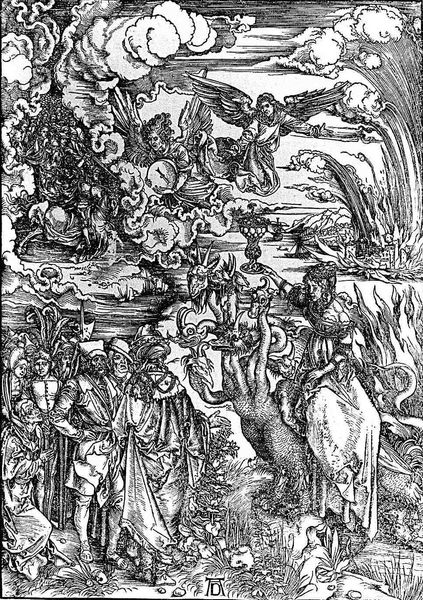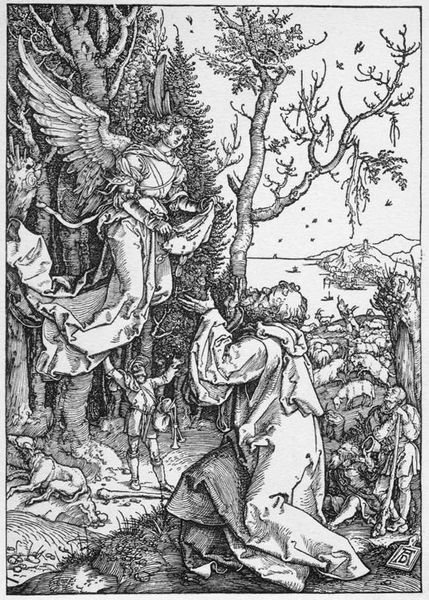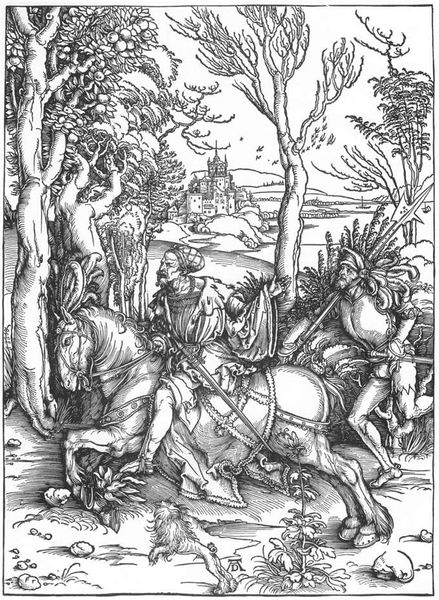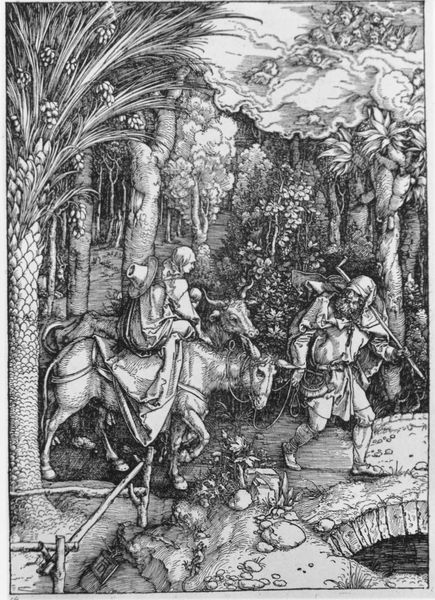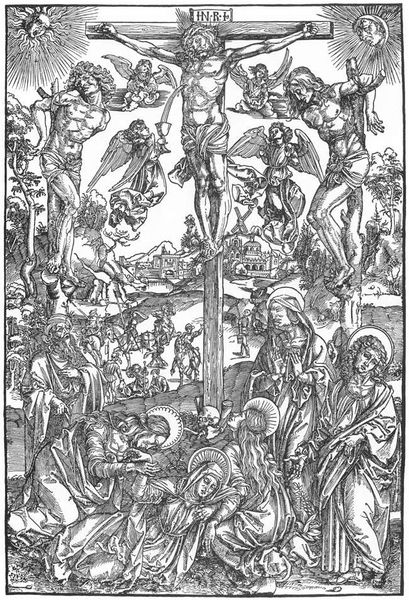
Copyright: Public domain
Editor: Here we have Albrecht Dürer's engraving, *Christ in Limbo*, created in 1511. The stark black and white contrast creates such a dramatic scene; the details of all of the figures seem crammed into the frame, but it is also well-balanced. What stands out to you when you view this engraving? Curator: The imagery is dense with symbolism, isn't it? Think of "Limbo" itself. In pre-Reformation theology, it’s this in-between place, neither Heaven nor Hell. Dürer visualizes this space as a literal breaking down of barriers—note the destroyed gates. The act of Christ bursting through them, rescuing souls, visually encapsulates this theological concept. Do you see other symbolic elements that suggest themes of redemption? Editor: Well, I see the figures reaching toward Christ… their expressions seem hopeful. Curator: Exactly! Gestures are powerful. Consider too, the objects scattered at Christ's feet, the broken scepter for instance; what do they represent to you? It shows the defeat of earthly powers and the triumph over sin and death. How do you feel that connects to the Northern Renaissance context in which Dürer was working? Editor: It speaks to the spiritual concerns of the time. The engraving has such raw emotional power... the promise of salvation amid so much visual chaos. Curator: Indeed! Dürer masterfully uses visual shorthand to convey complex theological ideas and emotional realities, contributing to a cultural memory of Christian hope and universal salvation. It leaves us contemplating the enduring human desire for redemption, even within moments of apparent despair. Editor: I see what you mean; it definitely feels more layered and hopeful now. I initially viewed it just at face value as being "hell".
Comments
No comments
Be the first to comment and join the conversation on the ultimate creative platform.
